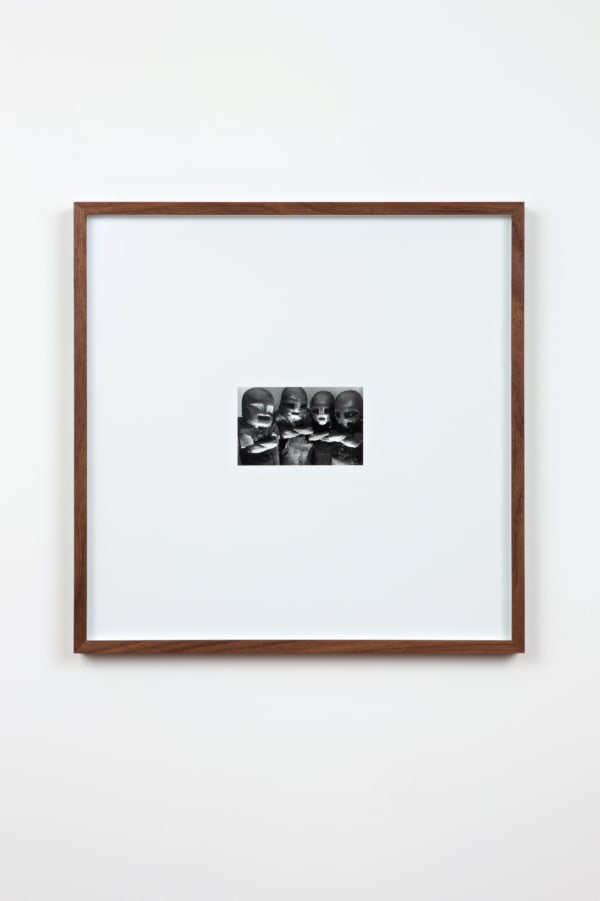GARDAR EIDE EINARSSON: "Discourses, Institutions, Buildings, Laws, Police Measures, Philosophical Properties, And So On."
STANDARD (OSLO)
PRESS RELEASE
-----
GARDAR EIDE EINARSSON:
"DISCOURSES, INSTITUTIONS, BUILDINGS, LAWS, POLICE MEASURES, PHILOSOPHICAL PROPOSITIONS, AND SO ON"
26.08.-24.09.2011 / PREVIEW: FRIDAY 26.08.2011 / 19.00-21.00
-----
STANDARD (OSLO) is pleased to announce an exhibition of new works with Norwegian artist Gardar Eide Einarsson. Entitled "Discourses, Institutions, Buildings, Laws, Police Measures, Philosophical Propositions, and So On" the exhibition comprises of three large-scale monochrome paintings and four bright orange steel sculptures, addressing the possibility of extracting meaning and form from the built environment without having its particular position register in or result in representation.
"Not only, therefore, prisons, madhouses, the panopticon, schools, confessions, factories, disciplines, juridical measures, and so forth (whose connection with power is in a certain sense evident), but also the pen, writing, literature, philosophy, agriculture, cigarettes, navigation, computers, cellular telephones and - why not - language itself, which is perhaps the most ancient of apparatuses - one in which thousands and thousands of years ago a primate inadvertently let himself be captured, probably without realizing the consequences that he was about to face."
-Giorgio Agamben
"Characters on stage should be fat, like clothes in a fashion show: what you get should be no more than what you see. Psychological realism is repulsive, because it allows us to escape unpalatable reality by taking shelter in the "luxuriousness" of personality, losing ourselves in the depth of individual character."
- Elfriede Jelniek
Gardar Eide Einarsson's monochrome paintings have the quality of both appearing as sincere and cynical. Initiated in 2009, Einarsson's "Stainless Steel (Fine)" paintings are each of the same format and each offering the same tautological truth; the title given to these paintings (with an additional number indicating their chronology) is identical to the brand name of the acrylic paint that has been used to make them. Merely flling the canvas Einarsson nivellates the act and the appearance of painting, arriving at what Yves Alain Bois describes as an "aesthetic of causality" and an equation that would conclude: "A (paintbrush) + B (paint) + C (support) + D (the manner in which these are combined) give E (painting)."
Needless to say, these paintings place the accent on B. The commonly produced acrylic paint, meant to imitate stainless steel, is in this case applied no different than how one would paint a house. The result is a faux industrial self- contradiction; without any efforts the paintings double as mimetic (in regards to the being realist reproductions of architecture) and as anti-mimetic (in being exercises of abstraction). The imperfect steel surface here translated to canvas could be considered to be both a found and a modified object. Einarsson's interest, however, remains firm: how do these paintings relate to the concept of the ready-made? In the case of the three paintings in the exhibition, Einarsson has further altered their integrity. The separate layers are reduced in density allowing the texture of the canvas or the canvas itself to appear. Willingly leaving them unresolved and unfinished, Einarsson enhances their appearance as props while also placing greater emphasis on the actual mark-making - reminding one of the negotiable distance between territorial decoration and territorial demarcation.
-----
This is Gardar Eide Einarsson's third solo exhibition with the gallery. Other recent solo exhibitions include Fridericianum, Kassel; Bonniers Konsthall, Stockholm; and Reykjavik Museum of Modern Art, Reykjavik Additionally, Einarsson's works have been subject to solo exhibitions at the Modern Art Museum, Fort Worth; Frankfurter Kunstverein, Frankfurt am Main; Centre d'Art Contemporain, Geneva, and the Astrup Fearnley Museum of Modern Art, Oslo. Einarsson (b. 1976, Oslo), lives and works in Tokyo and New York.
-----
Installation photography: Vegard Kleven







